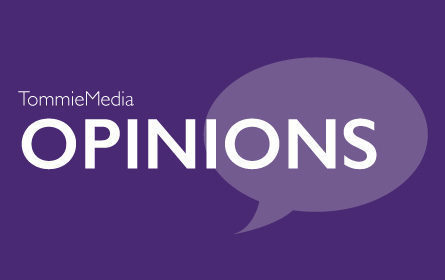Trust in American news outlets is concerningly low. The term “fake news” is circulating everywhere in current rhetoric with a certain amount of confusion and disdain for the news. However, I would argue that a majority of it is not at the complete fault of news producers, but a result of our personal desire to hear only what we want to hear.
I am not addressing the blatant form of fake news, like click bait on social media that writes utter falsehoods, but the more common and sometimes harder to distinguish news that produces swayed information and biased facts. I would define this kind of news as biased news, which can be a bigger problem with determining what is fake and what is not.
While it is easy to point fingers at guilty news outlets, we often forget that news organizations are just as desperate for revenue as any other business and because of that, they are put in positions where they need to please their audiences.
One of the main causes for the creation of so many biased sources is that news outlets are now being forced into competition with social media. According to Social Media Today, 50 percent of people have learned about breaking news via social media rather than official news sources. And almost more concerning, 49 percent of people have heard breaking news via social media that turned out to be false.
Social media is important in allowing everyone equal opportunity to share their views, but it can never guarantee accuracy. This means their standard for reliability is much lower, but because people still use it as a means of accumulating news, actual news sources are forced to compete for a loyal audience with it.
This leads me to my argument that people only want to hear what they already believe, or listen to a news outlet that they know aligns with their ideologies. We are quick to dismiss anything that doesn’t conform to what we think. I would argue part of this is because we don’t like being wrong but also, more importantly, because we have become too busy to receive straightforward facts and then interpret them for ourselves. We now require our news sources to almost formulate our opinion for us. We consider the allowance for personal interpretation as a waste of time, which is why we stick with the sources that affirm our current biases.
While a lot of the time it is a subconscious action, our aversion to see the other side of situations is what creates such a division in the first place. We get angry at the other side for producing biased news but most of the time ignore our own. Pew Research Center conducted a study on on people’s trust in news organizations. The study shows that 66 percent of people said news organizations in general are “often inaccurate.” However, that statistic dropped to 30 percent when asked about the news outlets they personally use most. This false sense of superiority doesn’t help us fix the problem, but instead just ignores one half of it.
Biased news is a product of our own negligence to demand straight facts and nothing else with it. Once we start to become too preoccupied to think for ourselves, we rely on news outlets that will do it for us and because they are competing for an audience, many are forced to oblige.
Sam Miner can be reached mine0034@stthomas.edu



